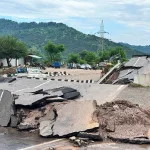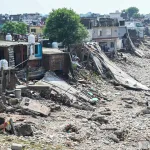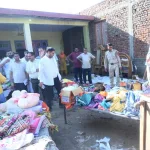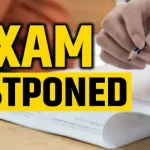According to Encyclopedia Britannica, during the early age of the Islamic world, ‘Khans’ (inns) were established in the towns to provide shelter and food to travelers. These Khans were found in the Middle East, North Africa and Central Asia. The earliest Khans were found during the Umayyad period in Syria, providing food and shelter for traders and travelers. Under the Ottoman rule in the 16th century, Khans became an inherent feature of a larger complex that included a mosque, fortress, bath and other amenities.
Early Madarsas were developed out of occasional lectures delivered in the mosques. And, later, Khan lodgings got adjoined to mosques for students who travelled to participate in these lectures. Endowments made by the ruling nobility were instrumental in formalizing these centers of learning as permanent institutions.
According to Britannica, Madarsa was, thus, a theological seminary and law school with a curriculum centered on the Quran and Hadiths. In Morocco, Sultan Abul Hasan (1331–1348) had founded the Ben Yousuf Madarsa.
In addition to Islamic theology; law, mathematics, logic, and natural sciences were taught in madarsas. Tuition was free and food, lodging, and medical care were provided as well. Instruction usually took place in the courtyard and consisted primarily of memorizing textbooks and the instructor’s lectures. The lecturer also issued certificates (Ijazat; singular ijazah) to his students educated in Madarsas. That constituted permission to repeat and pass on his lessons.
However, as centuries passed by, some scholars and clergy identified learning the English language and imbibing scientific knowledge with the so called ‘maladies’ of the British Rule in India. Thus, Madarsa Education got detached from English language and scientific learning. In this overall context, we the people of India need to give a well-thought-out benevolent treatment to our Madarsa Education System.
Currently in the 21st century India, Muslims are dominant minority (180 million as per Census 2011) comprising 14.2% of the total population and 73% of all minorities. The Report of the Prime Minister’s High Level Committee (popularly known as Justice Rajinder Sachar Committee) brings out clearly, with documentary support, the educational deprivation experienced by the Muslim community.
As per this Report the national average of Literacy Rate is 65.1% while the Muslim average is only 59.1%. The initial disparities between Muslims and “all others” have widened in all four groups: primary, middle, metric and higher secondary. Enrollment and continuation rates are the lowest among Muslims. And the problem is more acute for girls. Muslims are at a double disadvantage with low level of education combined with low academic quality.
In this context, reverting to our basic topic here, we notice that by the 12th century Madarsas were flourishing in Muslim societies of the world. In India the first Madarsa was established in 1192 AD in Ajmer. Even today, one can see remnants of the Madarsa adjoining Firoz Shah Tughlaq Tomb in Delhi. In modern India prominent national figures, including social reformer Raja Ram Mohan Roy, author Munshi Premchand and India’s first president, Dr. Rajendra Prasad were educated in Madarsas.
Contextually, we need to also recapitulate Article 46 of the Constitution of India that reads: The state shall promote with special care the educational and economic interests of the weaker sections of the people. This needs to be understood in conjunction with the findings of the Justice Sachar Committee 2006 and Justice Mishra Commission 2008.
Their Reports have made important recommendations to ameliorate the low Muslim educational level. Incidentally, these include re-evaluation of the school textbooks to purge them of explicit and implicit content that may impart inappropriate social values, especially in the field of religious intolerance.
Madarsas have surely provided schooling to the children supplementing the governmental measures aiming to achieve universalization of education. For the primary learning the adoption of the child’s mother tongue goes to fulfill the provisions of India’s national education policy, 2020. Yet, interestingly, as per Justice Sachar Committee Report, the fact is that only three percent of all Muslim students in the school-going age group are enrolled in Madarsas, though their absolute numbers are huge (like other demographic figures in India being a country of continental proportions). Thus, it is important to note that the outstanding capabilities of Madarsas, in fact, need to be benevolently harnessed in order to meet the challenges of modern education of Indian Muslims.
For this purpose, a vital initiative taken by the Government since 1996 is the ‘Scheme for Providing Quality Education in Madarsas (SPQEM)’. Its details are available at the website of the union Ministry of HRD. Simultaneously, it would be equally useful to make widespread use of the ‘equivalence’ provided to the certificates & degrees issued by Madarsas for subsequent admissions into institutions of higher levels of education.
The National Institute of Open Schooling (NIOS) gives an opportunity to students of Madarsas for a switchover to mainstream education. COBSE is an autonomous legal entity, patronized by the central government, that is a consortium of all boards of school education in India. All the provincial boards of madarsas should apply for membership to COBSE. Needless to mention, there is no need for Madarsas to nurture any apprehensions about aligning with COBSE. On the other hand, a decent level of integration and dovetailing of Madarsas with the national mainstream is quite necessary.
(The Author is President, Zakat Foundation of India, zakatindia.org





